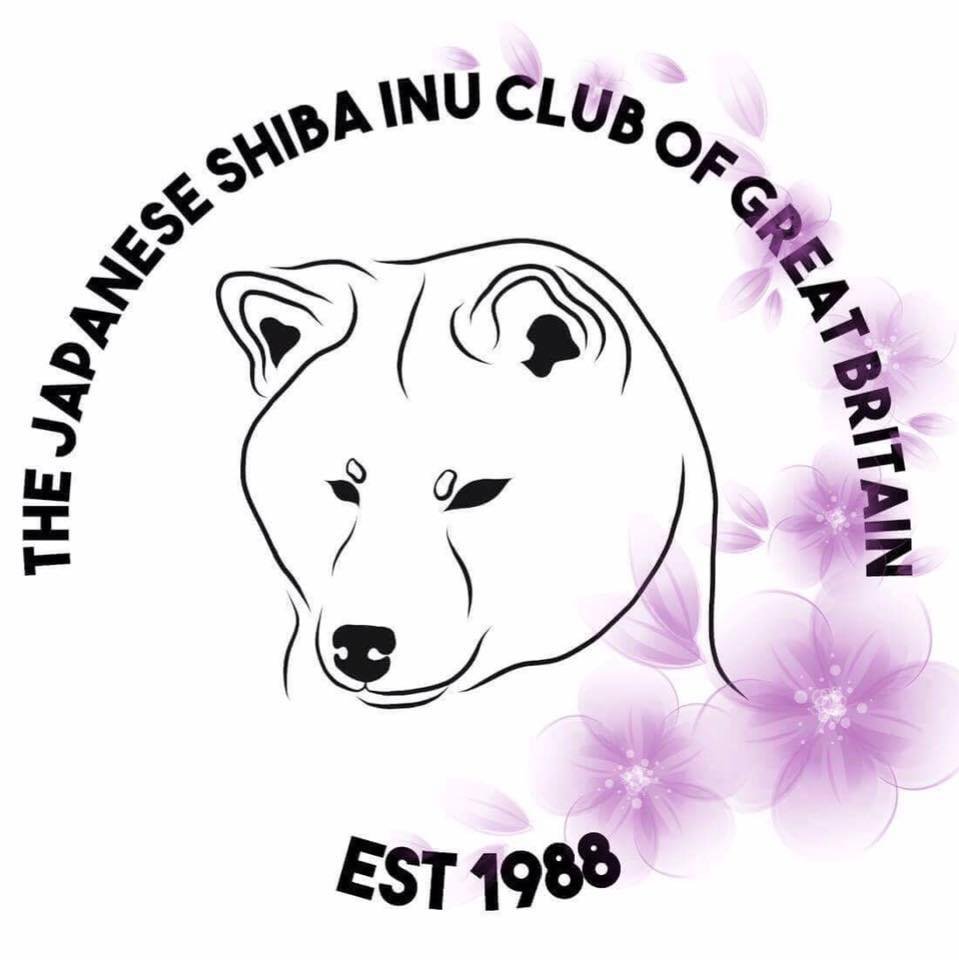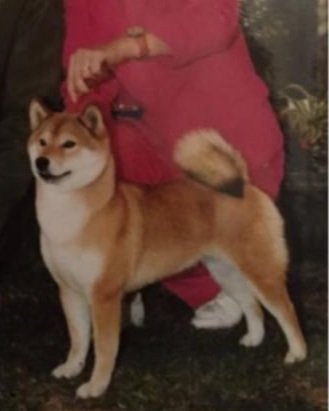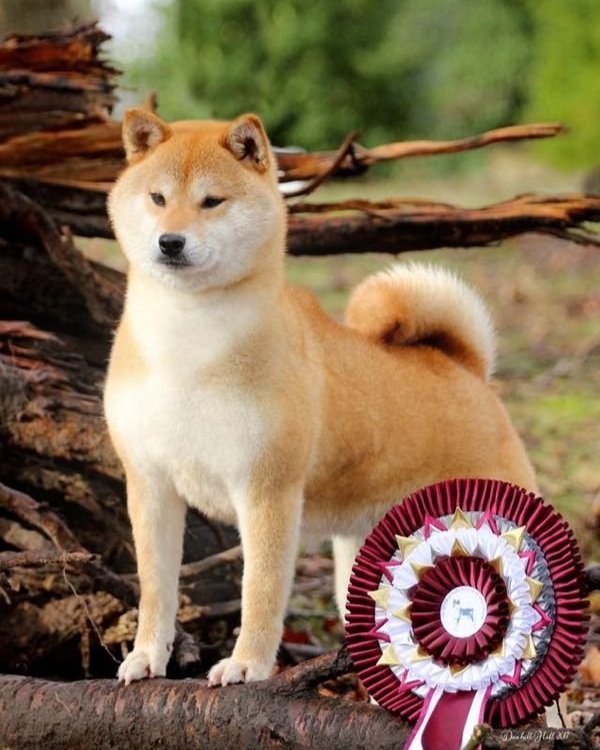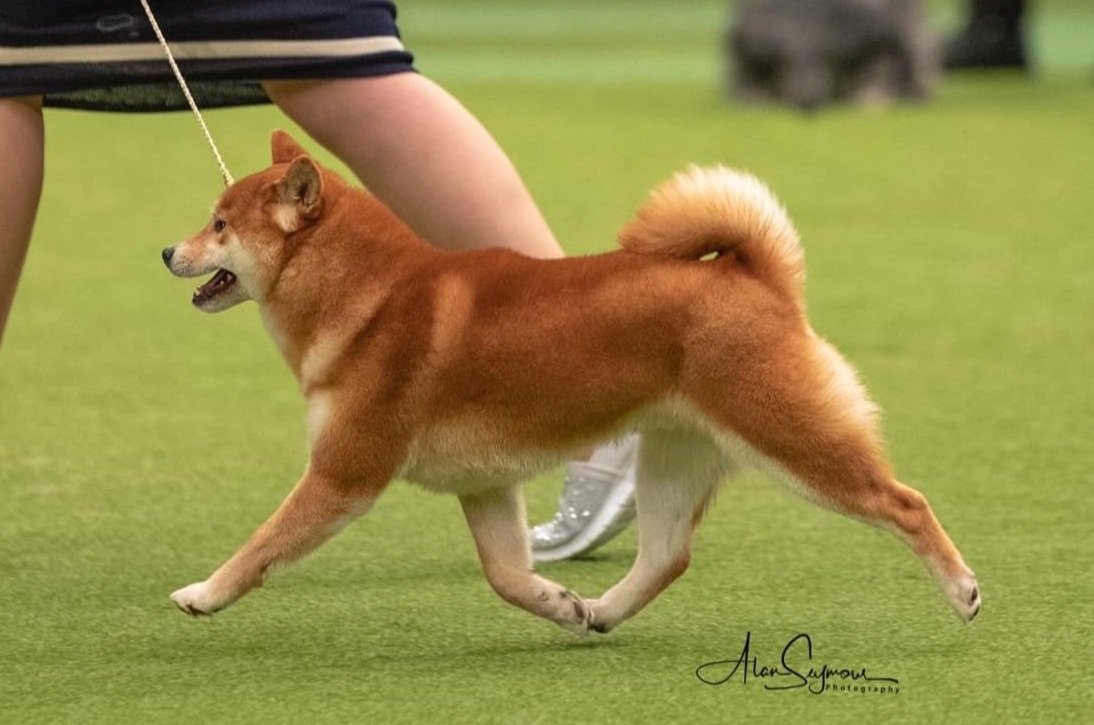The Japanese Shiba Inu
The name Shiba Inu translates as ‘small dog’ and the breed was developed to hunt small game birds. The Shiba Inu does bear some resemblance to the Akita in a smaller frame. So popular was the breed that three separate regions of Japan developed their own types. However, after the First World War the population was dangerously low and in 1928 a survival programme was developed using dogs from all three types. In 1937 the Shiba was declared a National Monument of Japan. This is another spitz and is characterised by its urajiro markings and its quick, light movement.
Notable Shiba’s in UK History
Breed Record Holder (Male)
Ch Vormund Jean Paul Gaultier
40 Challenge Certificates
Breed Record Holder (Female)
Ch Vormund I’m Marnie
36 Challenge Certificates
First UK Champion (Female)
Ch Vormund I’m Smartie
First BIS (All Breeds) - Leeds 1996
Youngest UK Champion
Ch Vormund Norma Jean
1 Year & 10 Days
Youngest Challenge Certificate Winner (Male)
Ch Vormund Sinister
Youngest Challenge Certificate Winner (Female)
Jaidev’s Quantum Force
“It takes a person of great patience and understanding to have a Shiba Inu.”
As cute as these dogs are, they are not the dog for everyone. A full grown Shiba still does many puppy antics. They are intelligent and sometimes too intelligent for their own good. They can be cunning like the fox they resemble. They can figure out problems with great ease and may even teach you things you didn't think a dog could do!
The well-bred Shiba Inu is good-natured, alert and bold. He is strong-willed and confident and often has their own ideas about things. They are loyal and affectionate with their family, though tends to be suspicious of strangers. The Shiba Inu doesn't share well. They tend to guard, sometimes aggressively, for food, toys or territory. They don’t always get along with other dogs and they won't hesitate to chase small animals that they can consider as prey.
They generally are NOT trusted of a lead unless supervised or in a fenced garden. These little Houdini dogs WILL escape if given the chance! They will forget their name as the hunting gene takes over! They do not bark a lot yet they can make a sound that is pure torture. This is known as the "Shiba Scream" One may witness this noise when a Shiba is severely displeased with a situation such as a visit to the vet, having a bath or having their nails trimmed.
It is important to point out that Shibas are NOT lap dogs and they are NOT Labrador retrievers. They are independent and aloof. Most Shibas don't like to be picked up and cuddled yet, they can be very affectionate
If you plan to bring a Shiba into your home, PLEASE do your homework first and make sure a Shiba is right for you.
Grooming: If you don't like dog hair, this is not the breed for you. Although Shibas are very clean and don't smell, they do shed at least twice a year, this is called blowing coat. Each shedding will require daily brushing your Shiba and vacuuming your floors. A warm bath and lots of brushing will help control the shedding but will not keep your house and clothing hair-free. When a Shiba is not shedding, they are very easy to maintain. A good brushing once a week, bath only when they need it and regular nail trimming will keep your Shiba in tip top shape. Start regular grooming from an early age; this will encourage your dog to like rather than fear. Shiba’s have particularly sensitive feet, handling their feet and getting them used to nail clippers should be started from an early age. Grooming is minimal for the Shiba Inu, but remember he does shed heavily twice a year.
Exercise: A regular walk in the morning and evening will be all your Shiba requires for exercise. Do not just let them out in the garden. They need to have regular stimulation and a walk around your neighbourhood is just the thing. However, if you have an active lifestyle, a Shiba will be able to keep up with you. Shibas adapt well to different living conditions. Shibas love to look out the window and watch the world go by.
Training: As with any breed of dog, however they are raised is what kind of dog they turn out to be. That includes how well they get along with children or other pets, how they behave in public and at home. Shibas have a problem getting along with dogs of the same sex. Shibas are not the easiest dog to train but with determination, a Shiba will become a very nice companion for a family. Training is a must and has to be fun for a Shiba as they will get very bored. Shibas learn very fast and can learn anything. Training your family, especially children how to treat a Shiba is a priority, as there will be consequences later. Certain games, when a puppy, should not be played due to their ability to take over the family as top-dog. Tug-of-war and chase games should be avoided. Games of catch and fetch should be encouraged. Shibas do not respond well to negativity such as pulling on the lead, hitting them with anything, shouting, or any kind of rough treatment. Shibas work wonderfully well with positive reinforcement such as treats and praise. If you want your Shiba to behave a certain way, show him, don't scold him.
Pros: Intelligent, Clean, Quick to train, Good size - not too big, not too small, Fun and entertaining, Energetic, Independent, Quiet most of the time, Do not bark unless necessary, Sometimes gets on with other dogs and cats, not clingy.
Cons: Like to escape, Can’t be let off lead, Must have fenced yard, Sheds at least twice a year - a lot of hair, Independent, Aloof, Not cuddlers by nature, Can be chatty, Food motivated, Shiba Scream, Sometimes don’t get on with other dogs or cats, Possessive.
Pictured above: Ch Kaga No Shouji Go Sapporo Kagasou Vormund (IMP) - Crufts BOB 2019 & 2020, Club BIS Winner 2020 & 2021
UK Kennel Club Breed Standard
General appearance: Small, well-balanced, sturdy dog of Spitz type. Very slightly longer than height at withers.
Characteristics: Lively and friendly. Bright, active, keen and alert.
Head and skull: Head appears as a blunt triangle when viewed from above. Broad flat skull, cheeks well developed. Definite stop with slight furrow. Muzzle straight, of good depth, tapering gradually. Lips tight. Black nose preferred but flesh coloured acceptable in white dogs.
Eyes: Relatively small, almond, obliquely set, well apart and dark brown.
Ears; Small, triangular, pricked and inclining slightly forward.
Mouth: Jaws strong with a perfect, regular and complete scissor bite, i.e. upper teeth closely overlapping lower teeth and set square to the jaws.
Neck: Slightly arched, medium length, thick and muscular.
Forequarters: Shoulders moderately sloping. Elbows set close to the body. Forechest well developed. Forearms straight. Pasterns slightly sloping.
Body: Withers high and well developed. Short loin, level back. Deep chest. Moderate spring of rib. Belly moderate tuck up.
Hindquarters: Long upper thigh; short, strong second thigh. Hocks strong and parallel when seen from rear, turning neither in nor out. Well developed. Slight but definite bend of stifle.
Feet: Cat-like with firm, tight, well-knuckled toes. Pads firm and elastic. Dark nails preferred.
Tail: Set on high. Thick and carried curled or curved as a sickle.
Gait/movement: Light, quick and energetic.
Coat: Hard, straight outer coat with soft dense undercoat. Hair on tail slightly longer.
Colour:
Red: Intense, clear red. White markings restricted to eye spots, cheeks, under jaw, forechest, underparts and underside of tail and legs. No white above elbows or hock.
Red Sesame: Red with an even overlay of black guard hairs; black to be not less than 25%, or more than 50% of normal red area. White markings in Red and Red Sesame restricted to eye spots, cheeks, under jaw, forechest, underparts, and underside of tail and legs. No white above elbows or hock. The white marking on the forechest resembling the shape of a bow-tie. Colour Eye spots in Red Sesame may be tan.
Black and Tan: Dull black with a bronze cast. Tan markings restricted to eye spots, cheeks, inside of ears, legs and tail. White markings as in Red and Red Sesame. Tan markings only occur between black and white areas.
White: White coat with red or grey tinges. White undercoat.
Size: Height dogs 39.5 cms (15½ ins); bitches 36.5 cms (14½ ins) with allowance of 2 cms (¾ in) either way.
Faults: Any departure from the foregoing points should be considered a fault and the seriousness with which the fault should be regarded should be in exact proportion to its degree and its effect upon the health and welfare of the dog and on the dog’s ability to perform its traditional work.
Note: Male animals should have two apparently normal testicles fully descended into the scrotum.
*Note for prospective puppy buyers
Size – The Kennel Club breed standard is a guide and description of the ideal for the breed; the size as described does not imply that a dog will match the measurements given (height or weight). A dog might be larger or smaller than the size measurements stated in the breed standard.
The four colours of the Japanese Shiba Inu recognised in the UK Kennel Club Breed Standard.
L-R: White, Black & Tan, Red and Red Sesame
Picture courtesy of Michaella Dunhill-Hall, taken at our first Breed Appreciation Day, October 2022.










